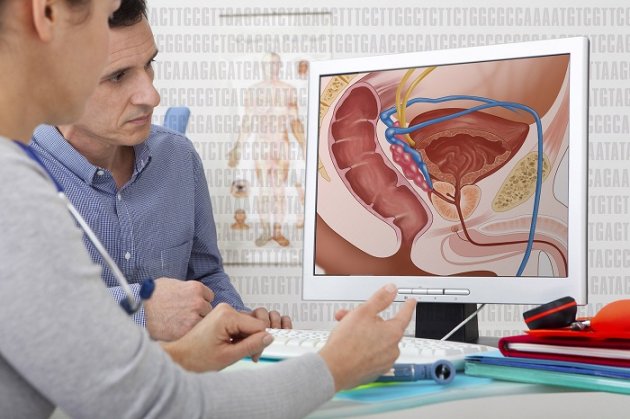Leukemia is basically the cancer of white blood cells. Our blood cells have three main categories; Red blood cells, White blood cells, and platelets. RBCs carry oxygen from the lungs to all the tissues of the body and bring back the carbon dioxide from them to the lungs. The main job of WBCs is to fight against infection, diseases, and viruses.
Bone marrow produces billion blood cells daily. In a healthy situation, the number of red blood cells is higher than the others. But in the condition, the bone marrow starts making more than required white blood cells. These cells cannot fight the alien virus or any infection in the body. When the numbers of these immature white cells are high, then it starts affecting the patient’s body. And because now the patient’s body is not getting the required RBC, body cells are not getting proper oxygen and enough platelets. In short, the condition of the body becomes miserable. This condition is known as leukemia.
Must Read: Tongue Piercing – The Procedure and a few facts you should know
Leukemia is one of the most common cancers in children but it occurs in adult people especially 55 or more years old too.
Lymphocytes and granulocytes are the two major types of white blood cells. Both of these cells circulate in all the body through the bloodstream to support the body to fight against any virus or infection. It can start from one of these cells.
Leukemia that starts from cancerous lymphocytes is named Lymphocytic leukemia and it arises from granulocytes is known as myeloid or Myelogenous Leukemia.
Types of Leukemia
We can classify Leukemia into two types. In the first type of classification, Leukemia can be of two types, either acute (sudden onset) or chronic (slow onset).
Acute
When most of the abnormal blood cells stay immature and not able to carry out normal functions, this condition is called Acute leukemia. Acute leukemia reaches to worst from bad at very high speed.
Chronic
In this condition, there are some immature cells along with other healthy cells. When immature cells do not perform well but healthy cells function normally. It develops slowly. In many cases, It initially does not produce any early symptoms and can go undiagnosed for years.
As we have mentioned earlier in this article that leukemia spread in our body through two different cells. So the second type of classification is based on the type of affected cells.
There are four major types of leukemia.
Acute Myelogenous Leukemia (AML)
Acute Lymphocytic Leukemia (ALL)
Chronic Myelogenous Leukemia (CML)
Chronic Lymphocytic Leukemia (CLL)
Acute Myelogenous Leukemia (AML)
AML occurs in the blood and bone marrow of patients. This type affects the white blood cells and stops them to work properly. It is a very common type of leukemia and can affect both children and adults.
Symptoms of Acute Myelogenous Leukemia
Fever, fatigue, and flu are the few early signs of AML. Patients can also feel bone pain in the case of AML. Excessive sweating (particularly at night) is a very common symptom of acute myelogenous leukemia. Here are a few other symptoms of AML.
- frequent nosebleeds
- bleeding and swollen gums
- easy bruising
- shortness of breath
- unexplained weight loss
- heavier than normal periods in women
Causes of Acute Myelogenous Leukemia
Abnormalities in the DNA are the main cause of AML. These abnormalities of DNA control the development of cells in the bone marrow. Bone marrow starts producing more immature WBC as a result. These cells replace the healthy cells and the body starts getting susceptible to infections.
Few doctors also believed that in many cases, DNA is not responsible for AML. Because of exposure to certain chemicals, radiation, and cancer drugs (in rare cases) a person can get affected by AML.
Treatment of Acute Myelogenous Leukemia
Treatment of AML has the following two phases.
Remission Induction Therapy: This is the first phase of the treatment of AML. In this therapy, chemotherapy is used to kill the leukemia cells of the body. In this therapy, healthy cells are also got killed and the risk of high bleeding and infection increases. So, the doctor advised the patient to stay in the hospital during this therapy.
Consolidation Therapy: This is the second phase of the treatment of AML. It is also known as post-remission therapy. The main aim of this therapy is to destroy the reaming leukemia cell. To generate healthy bone marrow cells, doctors usually prefer stem cell transplants.
Acute Lymphocytic Leukemia (ALL)
Acute Lymphocytic Leukemia is the most common childhood cancer, but in a few cases, adults also get affected by ALL. In ALL, the abnormal cells in a part of the patient’s body begin to grow out of control. ALL is an aggressive form of cancer and it moves rapidly, but still, it is treatable. Survival chances of children are higher in the case of ALL than adults.
Symptoms of Acute Lymphocytic Leukemia
Bruises, fever, or bleeding within the skin are the few symptoms of ALL. Patients also feel weakness, bone, and joint pain in the case of ALL. Here are the few other symptoms of ALL.
- bleeding from the gums
- enlarged lymph nodes under the arms, in the neck, or in the groin region
- enlargement of the liver or spleen or testicular
- short breathing problem
Causes of Acute Lymphocytic Leukemia
An error in DNA can increase the risk of ALL. Apart from this, high radiation can also cause ALL. It has been observed by the scientist that the Japanese survivors of the atomic bomb in World War II had an increased risk of acute leukemia. Exposure to chemotherapy, few chemicals can also increase the risk of ALL.
In a few cases, the viral infection is also linked with ALL. Inherited Syndromes and any ALL history in the family also increase the risk factor of ALL.
Treatment of Acute Lymphocytic Leukemia
Treatment of ALL has the following phases.
Induction Therapy: This is the first phase of the treatment of ALL. The main purpose of this therapy is to kill most of the affected cells in the blood and bone marrow.
Consolidation Therapy: This is the second phase of the treatment of ALL. It is also known as post-remission therapy. The main aim of this therapy is to destroy the reaming leukemia cell.
Maintenance Therapy: The main aim of this therapy is to stop the leukemia cells from re-growing.
ALL patients also need additional treatment to kill leukemia cells of the central nervous system. In this treatment, the doctor injected the chemotherapy drugs into the fluid of the patient that covers the spinal cord.
Chronic Myelogenous Leukemia (CML)
Most cases of Chronic Myelogenous Leukemia occur in people who are 25 to 60 years old. It grows slowly but it is dangerous and life-threatening. It’s not easy to diagnose CML. A person with CML can live a long life without even noticing about this disease.
Symptoms of Chronic Myelogenous Leukemia
CML has many common symptoms like fatigue, night sweats, fever, a swollen spleen, or a feeling of fullness in the abdomen. These symptoms are common to many diseases so trace down the CML only by these signs is not easy.
Causes of Chronic Myelogenous Leukemia
Genetic mutation is the main cause of CML.
Treatment of Chronic Myelogenous Leukemia
Chemotherapy and Bone Marrow Transplant is two very successful methods of the treatment of CML.
Chemotherapy: Drugs are involved in this type of treatment to kill the cancerous cells. It’s a common treatment for cancer.
Bone Marrow Transplant: In the case of the failure of chemotherapy treatment, doctors choose bone marrow transplant as another way to treat the patient. For this, a healthy donor is required. In most cases, the donor comes from the patient’s family. The procedure of bone marrow transplant is risky and it has adverse side effects too. That’s why the doctor chooses it as the last option.
Chronic Lymphocytic Leukemia (CLL)
Most cases of Chronic Lymphocytic Leukemia occur in people between the ages of 60 to 70 years. It grows slowly but it is also dangerous and life-threatening. Like CML, to diagnose CLL is also not easy. It affects more males than females.
Symptoms of Chronic Lymphocytic Leukemia
CML and CLL both are subtypes of it so they both share the same types of symptoms. In a few cases, a CLL patient can feel the painful lumps in his/her neck or a sensation of fullness in the belly.
Causes of Chronic Lymphocytic Leukemia
Till now, experts are not able to understand the exact causes of CLL.
Treatment of Chronic Lymphocytic Leukemia
Chemotherapy, Radiation, Blood Transfusions, and bone marrow transplant are the methods doctors suggest for the treatment of CLL.
Chemotherapy: This treatment is used to kill the cancerous cells. It involved medicines to kill leukemia cells.
Radiation: in this therapy, the leukemia cells are killed by high-energy particles or waves. Doctors use this treatment when the patient has painful swollen lymph nodes.
Bone Marrow Transplant: In case of the high risk of CLL, this is the only option. It involves taking stem cells from the bone marrow or blood of a donor and transplanting them into the patient’s body to help establish a new immune system.
The Bottom Line
Though we have done proper research in writing this article, we suggest you do your own research as this article is not written by any specialist or medical practitioner. We suggest you consult a specialist if you find anything unusual in your body before getting to any conclusion.



